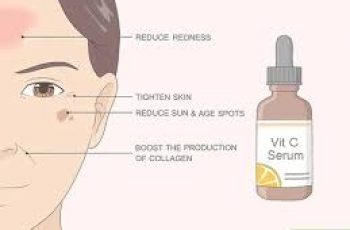
How to Get Rid of Milia
Have you noticed small white bumps appearing around your eyes and cheeks? They may look like whiteheads, but they are completely different. Although it can be confusing, there are a few ways you can determine exactly what you are dealing with and how to best care for your skin while safely getting rid of milia.
What is Milia?
Milia are small, white, cyst-like bumps that typically appear around the nose, on the cheeks, and under the eyes. When multiple milia cysts are present, they are called milia, and, as mentioned above, can look a bit like blemishes known as whiteheads. They appear small and round, but rarely cause discomfort. However, some people may find themselves becoming irritated, especially if they are frequently exposed to rough pillowcases or towels. You can get milia in a number of ways:
Blistering of the skin caused by skin conditions like epidermolysis bullosa
Exposure to irritating plants like poison ivy
Long-term use of steroid creams
Long-term sun damage
The aftermath of skin resurfacing procedures like microdermabrasion and laser resurfacing
Superficial burns and burn-related wounds
You may also notice that milia become more common as you age. This is a result of the skin losing its ability to naturally exfoliate and accumulating dead skin cells, dirt, bacteria, and impurities.
There are many different types of milia. For example, you may have heard of babies being born with “baby acne,” which is related to the mother’s hormones and usually goes away two to four weeks after birth. Other major types occur when the natural keratin present in the body becomes trapped and develops into cysts, and when there is damage to the skin’s surface, such as a burn or blister that clogs the pores.
How to get rid of milia on your face?
You will often find that milia go away on their own over time. However, if you want faster results, there are some habits you can practice at home to keep your skin clear.
Daily Cleansing – Use a gentle, non-foaming cleanser daily to cleanse away impurities that come into contact with your skin on a daily basis.
Gentle Exfoliation – Depending on your skin type, use an exfoliating toner with either AHA (e.g. glycolic acid) or BHA-salicylic acid to remove dead skin cells, excess sebum, and other forms of bacteria. Be careful not to over-exfoliate as this can irritate the skin and strip it of its essential oils and moisture.
Daily Sun Protection: Applying sunscreen daily can protect your skin from further damage from UV rays and other environmental influences.
Don’t Squeeze: As mentioned above, these look a bit like pimples, but it’s best not to squeeze or scratch them as this can lead to infection and scarring on the surface of the skin.
Avoid Heavy Products: Any product with a heavy cream or oil base will generally cause more greasiness. Switching to a lightweight gel product will keep your skin hydrated and avoid further redness.
Use a Mask: Using a clay mask two to three times a week can detoxify the skin and remove impurities that remain on the surface of the skin. By eliminating this barrier on the skin, the products you apply afterwards will be absorbed more effectively.
Peeling – Professional treatments such as peeling remove the outer surface of dead skin cells, leaving behind fresh, new, radiant skin with no signs of milia.
If you stick to this simple habit, you’ll find that your milia problems decrease and that you’re less likely to have further breakouts.
What causes milia under the eyes? The causes of milia under the eyes are the same as those anywhere on the skin. If left alone, they too will go away over time, but if you need professional treatment, you can consult a dermatologist who will recommend one of the following options: Debulking – This is the use of a sterile needle to carefully remove the milia. Cryotherapy – Liquid nitrogen freezes the milia, which is a great option for the cheeks and nose, but isn’t usually recommended for the eye area. Laser ablation – A small laser is used to open up the cyst and remove the keratin deposits within it. There are also some things you can try at home to prevent milia, such as: Cleanse and moisturize your skin regularly to keep it hydrated and healthy. This allows new skin cells to reach the surface of the skin and loosen up the keratin beneath the surface of the milia. Exfoliate and deeply nourish your skin with an eye serum enriched with vitamins E and A. Use an eye mask enriched with hyaluronic acid two to three times a week to lock in moisture and keep your skin hydrated. Here are some of the best professional treatments and skincare products to add to your daily routine that will help keep your eye area healthy and prevent milia from forming. What happens if you express milia? Unlike pimples and whiteheads, milia do not have an opening on the surface of the skin. Trying to squeeze and pop them does not have the same consequences as pimples, but can lead to redness, inflammation, and scarring of the skin. This causes them to stay on the surface much longer than if you let them go away on their own or use the recommended treatments and products I mentioned earlier. Do milia go away? Although milia are annoying, the cysts usually disappear over time. For babies, you can expect them to disappear within a few weeks, while for older children and adults, it may take several months. If you remember to keep your skin clean and nourished with a selection of nourishing and effective skincare formulas, you will be free of milia in no time. If after a few weeks you find that your milia are not responding to these suggestions and products, it is best to see a doctor or dermatologist to consider further professional skin treatment. If you have any further questions about milia or other skin problems, don’t forget to find me on Procoal’s Instagram. Come join the skin chat.
DQH Knowledge drop: In your 20s, your skin cell turnover decreases. (Cell turnover is a key component in keeping your skin youthful.) You know what else slows down? Your collagen production. Starting in your 20s, collagen decreases by about 1 percent per year. Should you want to prevent fine lines and wrinkles, start by eliminating behaviors that contribute to premature aging. “If it’s bad for you, it’s bad for your skin,” says dermatologist Michel Somenek.
“Cigarette smoking reduces blood flow to the skin and causes premature wrinkling and a dull skin texture. Making the repeated pursed motion to inhale can also cause smoker’s lines. Alcohol and recreational drugs are toxins for the skin that damage its cellular structure and DNA,” Somenek tells us. “The faster you eliminate vices while you are young, the better chance your skin and body have to recuperate.” Also, adopting an anti-aging routine in your 20s is key. After all, the best offense is a good defense. We spoke to Somenek and experts Joshua Ross and Audrey Kunin to find out more.
Keep reading for the best anti-aging products for your 20s, according to skincare professionals.
Sunscreen
“We all know that the sun is the number one cause of skin aging and starting the prevention in your 20s is very important,” Ross says. “The majority of your sun damage won’t start to appear until you’re in your 30s, so don’t wait until you see it surface or you’ll be behind the curve. Stay ahead of it with a good-quality zinc-based sunscreen worn daily.”
Farmacy Green Defense Daily Mineral Sunscreen
An invisible sunscreen with SPF 30, plus botanical extracts meant to protect skin with tons of antioxidants. Bonus: It’s clean and fine to use under makeup.
Bareminerals Complexion Rescue™ Tinted Moisturizer Broad Spectrum SPF 30
Although we recommend you use your SPF and moisturizer separately, we also understand moments when you don’t have time or energy for that extra step. For those times, this bareMinerals moisturizer is a great thing to have on hand.
Vitamin C Serum
“A great introduction to anti-aging is to start with a vitamin C serum in your morning skincare routine,” Ross says. “It’s a powerful antioxidant that will neutralize free radicals and brighten the skin.” He adds that it’s a great way to counteract the effects of the sun’s harmful rays, which, as previously mentioned, are among the biggest causes of premature aging.
Drunk Elephant C-Firma™ Vitamin C Day Serum
The Drunk Elephant C-Firma is a lightweight serum that promises to give skin a glow by combining the brightening powers of vitamin C with ferulic acid, l-ascorbic acid, and vitamin E. The included sodium hyaluronate is meant to replace hydration loss, so you shouldn’t have to deal with any irritation.
Sunday Riley C.E.O. Rapid Flash Brightening Serum
This potent serum is jam-packed with vitamin C (15 percent, to be exact), which means it’s a potential superstar at both brightening skin and dousing it in antioxidants.
Peptides
Using peptides on your skin has many benefits, says Somenek. “The skin barrier is what defends the body against pollution, UV rays, bacteria, and toxins. It can be damaged by several everyday factors. Using topical peptides aids in building a stronger barrier,” he says. “Peptides comprise elastic fibers, which are a type of protein. These fibers help to make skin appear taut and firm. Peptides can also help repair damaged skin, relieve inflammation, and even out skin tone. Some peptides can kill acne-causing bacteria that is common in 20-somethings.”
Kunin agrees, saying, “Peptides are an excellent entry point for supporting collagen.” She recommends looking for face and eye treatments that contain these collagen-boosting powerhouses.
Charlotte Tilbury Magic Eye Rescue Cream
This Charlotte Tilbury super-emollient eye cream has a base of coconut oil and shea butter (read: it’s incredibly hydrating). Botanicals plus peptides are meant to help reduce dark circles and boost collagen, respectively.
This creamy moisturizer serves up potent collagen-boosting peptides and pycnogenol, and antioxidant-rich vitamin C. “Instead of sitting on top of the skin, peptides penetrate the outer layer so they go deep. The ‘signals’ they send tell the cells to produce elastin and collagen, which are needed for youthful-looking skin,” explains Somenek.
At-Home Peel Pads
Remember that skin cell turnover fiasco we talked about earlier? One way to help support it is by exfoliating. “Exfoliation is important to help keep skin fresh and luminous,” Kunin says. She recommends using at-home peel pads as an easy and effective way to exfoliate.
“The goal in your 20s is to fight the slowing pace of cell turnover. It is wise to use products that gently exfoliate, yet still remove oil and other impurities. Products that have Alpha Hydroxy Acids (AHA) or Beta Hydroxy Acids (BHA) are a good choice.”
According to Somenek, you should only exfoliate two to three times a week. “People of all ages are guilty of over-exfoliating and that can be too much of a good thing,” he says.
Dermadoctor Kakadu C Intensive Vitamin C Peel Pad
A few swipes of this Derma Doctor powerful peel pad promise to leave your skin glowing and smooth, thanks to the seven (yes, seven) types of chemical exfoliants, including AHA and BHA. It also contains vitamin C via Kakadu plum extract for added brightening and antioxidant protection.
KEY INGREDIENTS Kakadu plum extract is sourced from the Kakadu plum, a fruit grown in northern Australia. It contains vitamin C, which restores the skin’s natural barrier, increases collagen production, and soothes irritation.
Dr. Dennis Gross Skincare Alpha Beta® Universal Daily Peel Pads
These are the gold standard of peel pads, with a cult following and over 900 five-star reviews on Sephora. They’re easy to use and contain a blend of anti-aging exfoliating acids.
Emollient Night Cream
“In your 20s, you need to start upping the hydration in your skincare routine. You may have been cautious of over-moisturizing because of acne in your teens, but as you enter your 20s, your skin transitions and becomes drier,” Ross says. “I recommend an emollient night cream added into your evening skincare regimen.”
“Twenty-somethings need to make sure that they are not using creams that will clog their pores and cause excess oil production,” says Somenek. Opt for non-comedogenic products.
Cerave Skin Renewing Night Cream
One great choice is the CeraVe Skin Renewing Night Cream, which is a non-comedogenic night cream that leaves skin soft and glowy. It combines the moisturizing powers of ceramides and hyaluronic acid.
RoC Retinol Correxion Max Hydration Creme
“The best night cream ingredients contain retinol, benzoyl peroxide, and/or salicylic acid or hyaluronic acid. The goal is to moisturize, yet remove excess oil,” says Somenek. This Roc Retinol Correxion cream fits the bill as it contains both hyaluronic acid and retinol so it promises to moisturize while also being non-comedogenic.


